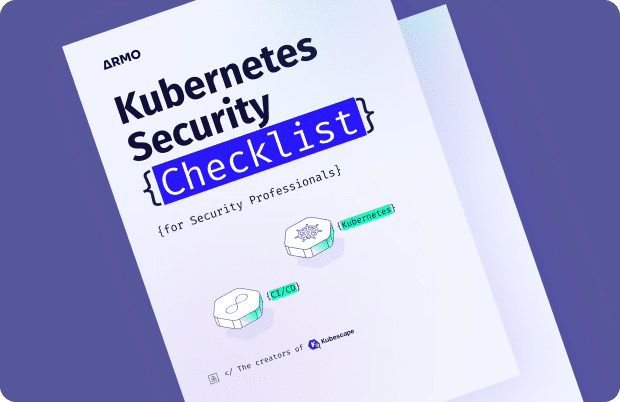eBPF in the cloud
How is eBPF leveraged in cloud management?
Many cloud computing management tools use eBPF, which is why it is important to understand its advantages, use-cases, and how it can be leveraged in Kubernetes operations.
Linux has two memory parts: Kernel and userspace. The kernel is crucial to the OS’ smooth functioning because of its interface between the hardware and the processes an OS runs. Now, considering how important it is, the Kernel uses only secure and trusted codes.
While using Kubernetes, however, one might need to use different codes for numerous purposes which we’ll see further in this article. With that in mind, we can now examine how eBPF is leveraged by various tools to help monitor cloud operations.
What is eBPF?
eBPF stands for extended Berkeley Packet Filter. It is a technology that executes codes in the Linux kernel and is necessary for Kubernetes network observability/monitoring, auditing, and traffic routing.
As mentioned earlier Linux kernel only executes code from trusted and secure sources. So, eBPF ensures that the kernel’s capabilities are extended without having to change the source code within it. Thus, some people also look at it as a sandbox virtual machine that leverages certain kernel resources without affecting it in any way.
In Kubernetes clusters, monitoring the various containers and routing traffic based on the availability of resources, is necessary for the applications to function efficiently eBPF enables this.
What are the Advantages of eBPF?
Using eBPF for Kubernetes service has numerous advantages which ensure that the processes take place in an optimal way. These benefits include:
Convenience
One doesn’t have to create kernel modules for performing the Kubernetes operations mentioned. With the way eBPF functions, one just has to create and manage the sandbox programs, which makes it much more convenient and simple.
Singular Framework
The eBPF acts as a single structure/platform/dashboard for Kubernetes-oriented operations. Admins can essentially use this to get insight on details such as which containers are being used, conduct packet traffic controls, execute auditing commands, and more.
Security
eBPF is more secure than running a kernel module in privileged processor mode, which could be potentially exploited by malicious code to cause a denial of service or other types of attacks.
Considering it is a sandbox virtual machine, if the eBPF programs are affected in any way, then it does not have an impact on the other Linux kernel programs. This makes the technology more secure than alternate solutions.
eBPF can also be utilized within the Security Profiles Operator, to ensure consistent scalable security for each container regardless of the size of the rollout.
Troubleshooting in Real-time
eBPF can also be used as a debugger. However, while carrying out this process, it doesn’t have to stop any running program. Instead, it will troubleshoot without interrupting the process which would result in lesser downtime.
While these are a few pros of using eBPF, there are others including rich programmability, high speed, and efficient performance. Before I list down the eBPF tools you can use, let’s look a little deeper into where, when, and how eBPF is used with Kubernetes.
Scenarios Where eBPF is Used
Many tools leverage eBPF as illustrated in the common scenarios below:
Kernel Observability
There are numerous cloud monitoring tools that can be used to get real-time insights into the K8 containers 24×7. However, there can be issues such as request latency, so to prevent those complications eBPF in the kernel layer is used. As mentioned previously, it is pretty fast and can function quite efficiently.
Routing Network Traffic
Usually, packets traveling in a network are only cognizant of leaving from point A to reach point B. However, the routes or paths they use may not be the most optimal. With eBPF, the packets gain awareness of the shortest, fastest, and essentially best paths to travel in, reducing the overhead and increasing efficiency.
Tracing Programs
While eBPF is used for monitoring operations running in Kubernetes containers, it is also necessary to keep a track of the programs that enable them. After all, any defects in them can result in a defect in the monitoring operation.
eBPF comes with this feature as well. Since it creates most of the programs in the sandbox, it also allows admins/operators to track the various steps and facets of the program. If there’s any issue or loophole in them, then it can then be identified.
Tracking TCP Connections
The Weave Scope tool is used for giving periodic reports on the container-based system and its performance. While most of the operations are carried out by the tool itself, the eBPF is leveraged for having visibility of the TCP connections such as socket events.
Pod and Container Statistics
eBPF, in general, is known to give users in-depth visibility of the K8 systems. When Linux 4.10 was launched, it came up with a hierarchical grouping system for the container and pod levels. eBPF could then provide network statistics for each of these groups and thus give complete details of the functioning of different pods and containers.
These are a few scenarios in which eBPF is used. Now, that you know this, let’s look at the tools.
List of eBPF Tools in the Market
Following are some of the prominent tools that use the eBPF technologies:
● Cilium
● Falco
● Sysdig
● Hubble
Use Case: How Netflix uses eBPF for Network Insight
Before I conclude, let me illustrate a small example of how Netflix uses eBPF. Netflix uses a network observability sidecar known as Flow Exporter. This is responsible for giving near real-time TCP flows. It is an extremely high-performing system and any instance uses less than 1% of the CPU.
However, this is not all, the streaming giant also uses multiple other tools that offer functionalities of a dashboard, visualizing metrics, and more. Thus, it has an entire infrastructure for this purpose.
Flow data is collected from EC2 instances and Titus containers, along with the application’s metadata. After this, the flow is attributed to the metadata, and this attributed flow data is used for network monitoring, forecasting, network segmentation, observability, and more.
Thus, this is one such use case of eBPF which illustrates in a brief way how it is leveraged and used. Other giants such as Facebook (Now Meta) also use an eBPF for their own purposes.






